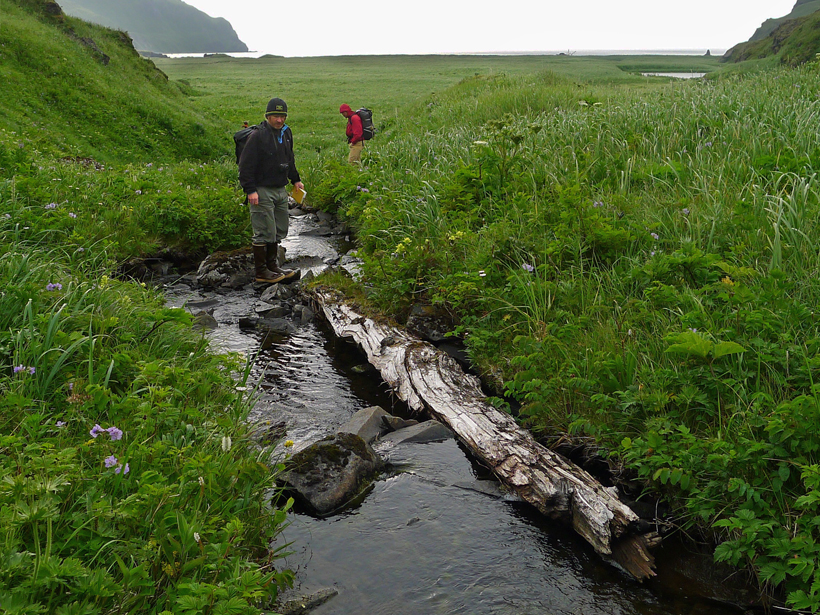Source: Geophysical Research Letters
When we think about what causes an earthquake, the first thing that usually comes to mind is a fault that slips suddenly—the kind of sudden quakes that can generate tsunamis. But a fault line that creeps—when two tectonic plates slide against each other smoothly—probably wouldn’t be considered a major suspect for tsunami-causing earthquakes. Far north off the Aleutian Islands, however, a creeping section of the Aleutian Subduction Zone might be the source of past and future tsunamis that could impact coastal areas around the Pacific Ocean.

Witter et al. explored the coastal geology at Stardust Bay on Sedanka Island, Alaska, above a creeping part of the Aleutian Subduction Zone, and identified six tsunami events recorded in distinct marine sand layers. Drift logs and other landforms near the beach also provide clues that tsunamis historically hit the shores of Sedanka Island. These included shallow ponds, a swale just behind the current beach berm, an apparent tsunami terrace, and unusual stream channels most likely caused by posttsunami backflow.
The researchers used radioactive cesium to date the first layer of sand, which most likely was deposited by the 1957 Aleutian tsunami. They used carbon-14 dating for the second through sixth sand layers and found that that second sand bed was laid down by a tsunami that inundated Stardust Bay between 300 and 175 years BP (before present, measured from 1 January 1950 to reflect when radiocarbon dating was first used). The third through sixth sand layers came from tsunamis that occurred from 660 to 560, 1170 to 1010, 1380 to 1280, and 1680 to 1510 years BP, respectively. On average, a tsunami hit Sedanka Island every 300–340 years.
The causes of these tsunamis remain somewhat unclear, as the nearby fault presently creeps and appears not to be storing energy to release in a big seismic event. The researchers simulated the 1957 tsunami and found that the Aleutian Subduction Zone fault would need to have slipped by at least 10 meters in order to generate waves large enough to leave the evidence for inundation that they found in Stardust Bay. Because the subduction fault isn’t currently locked, the team also considered alternative sources for the tsunami—but each potential source relies on rupture of some kind of fault offshore. They even investigated whether an underwater landslide triggered the tsunami but couldn’t find any conclusive evidence for or against such an event. These findings suggest that an unknown tsunami source still lurks within this creeping part of the Aleutian Subduction Zone. (Geophysical Research Letters, doi:10.1002/2015GL066083, 2016)
—Cody Sullivan, Writer Intern
Citation: Sullivan, C. (2016), Unknown tsunami trigger hides along a creeping Aleutian fault, Eos, 97, doi:10.1029/2016EO047207. Published on 3 March 2016.
Text © 2016. The authors. CC BY-NC 3.0
Except where otherwise noted, images are subject to copyright. Any reuse without express permission from the copyright owner is prohibited.

